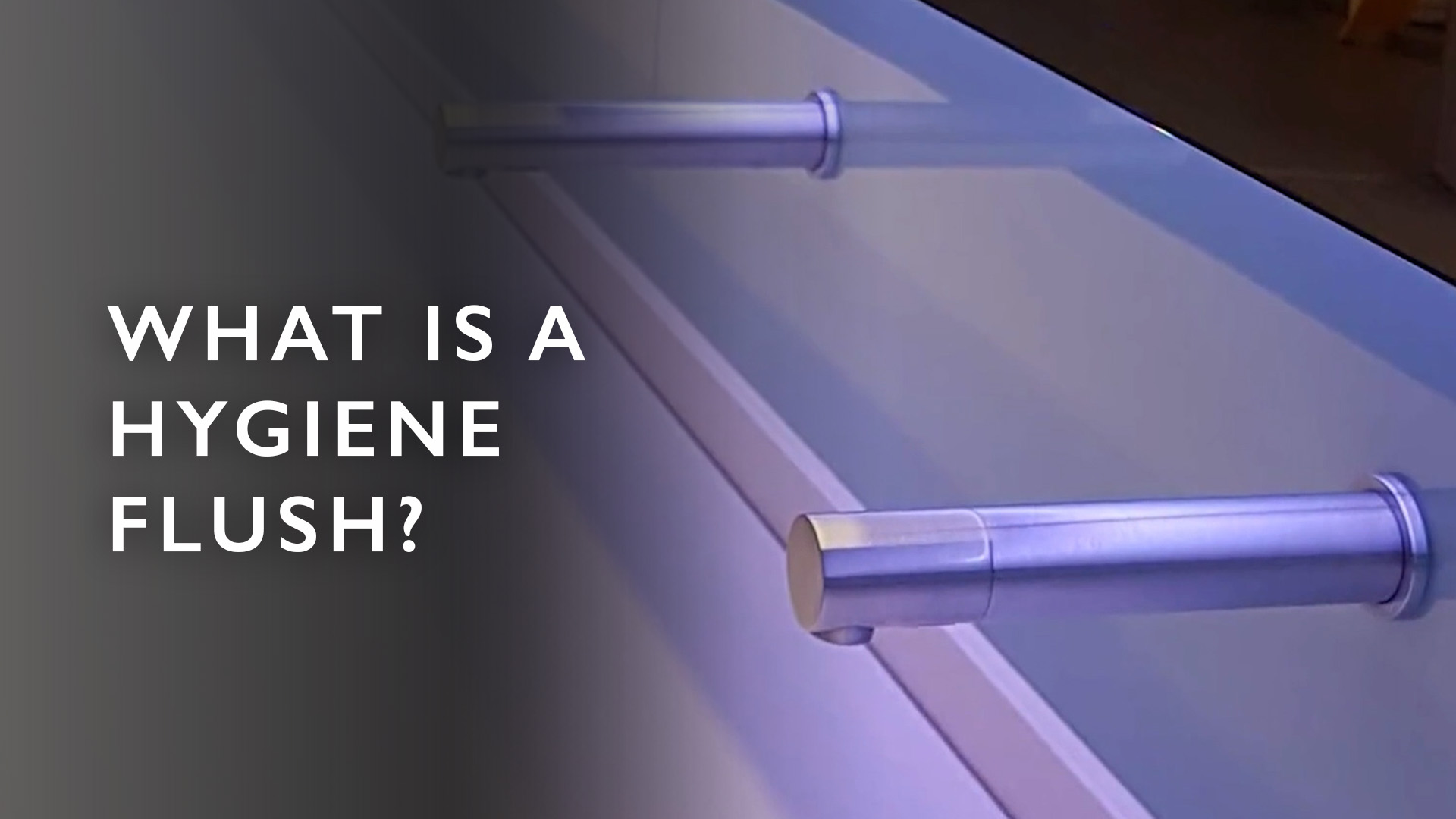21 September 2022
Reading time: 4 minutes
Under general UK Health and Safety law, a landlord or person responsible for a property has a duty to take adequate precautions to control and prevent the risk of water contamination (such as legionella) in the building.
Although architects and contractors may not directly be responsible for preventing this threat, they can add value to their project and help their clients to reduce the risk by including a hygiene flush system in the washroom design.
Dolphin supplies timed hygiene flush systems in our taps and WC pan range because we know it will add value to your project and will ultimately benefit your client too.
In this article, we will explain what a hygiene flush feature is, what problems arise if it does not exist in a commercial washroom, how it can reduce the risk of legionella, and how it can help to achieve points in the WELL standard.

What is a hygiene flush system?
The timed hygiene flush is an innovative system operated by SMART washroom technology. The purpose of its automatic functionality is to flush water components with infrared flush sensors at periodic intervals using timer settings.
Hygiene flush systems integrate with sensor activated washroom fittings such as WC flush plates, touch free taps, urinals, and the timer settings can either be controlled digitally through an app or Cloud or operated manually through remote control.
However, you must first decide how you prefer to adjust the settings before you choose your washroom fittings because not all products within a sensor activated range can integrate a hygiene flush digital system.

To see our full range of taps click here or if you want to read about the differences between manual and infrared taps click here. Alternatively, click here to visit our contact page.
When would you need to activate a hygiene flush timer?
Some facilities teams run the hygiene flush system every day of the week, and some decide only to have it activated when the building is unoccupied.
It is recommended to run the timed hygiene flush during these periods:
- the festive season
- bank holidays
- weekends
- during the wait time for tenants to move in
- School holidays
When buildings are left vacant, the water system becomes at risk. This is when the hygiene flush feature really proves its value.

What problems arise without a water flushing regime?
Without a water flushing regime, there is a significant risk of legionella bacteria growth.
A change in thermal disinfection (water temperature) combined with stagnant or poor water flow and decreased water disinfectant becomes a breeding ground for legionella to grow. Under utilised water systems also encourage biofilm growth — another form of harmful bacteria.
Water contaminated with legionella poses a health risk to users. People can fall seriously ill with Legionnaires’ disease, which requires treatment with antibiotics or hospital care.
There is another risk of waste traps drying up due to the period of water inactivity. Dried waste traps cause smelly sewer odours that escape from the drain and enter the washroom. Upon reopening the building, imagine walking into a beautiful washroom with built up sewer gases roaming the atmosphere – a rather unpleasant thought.
How does automatic flushing reduce the risk of legionella?
What you want to avoid is the water becoming stagnant. Setting up a timer on the hygiene flush feature will automatically flush WCs, taps, and urinals at set intervals, keeping the water flowing through the system and preventing the growth of legionella or biofilm.
If the hygiene flush feature operates by remote control, all it takes is for a facilities member to walk around the building and merely push a button to activate the flush system per washroom.
The timed hygiene flush also prevents waste traps from drying out and is a simple solution to run water down the drains to restore the waste trap’s water barrier.

Hygiene flush systems for a WELL certified washroom
Part 2 of the Hygiene Support feature within the Water Concept of the WELL Building Standard v2, Q1 2022, specifies equipping the washroom with a programmable line-purge system (hygiene flush system) as part of the criteria to achieve 1 point in this section.
If you are on the journey to achieve a WELL certified washroom, then incorporating a hygiene flush system will take you one step closer to achieving the required point.
Flush your worries down the drain
A timed hygiene flush feature prevents the risk of legionella and other harmful bacteria from building up in the water system and puts a stop to waste traps drying up.
Choosing washroom fittings with an integrated hygiene flush that operates through SMART washroom technology will add value to your project and count towards achieving a WELL certification. It will also benefit your client with the assurance that the building is a safe place for tenants.
The types of washroom fittings available with an integrated hygiene flush system:
- Touch free taps
- WC flush plates with automatic toilet flush
- Infrared urinal flush
With a digitally operated hygiene flush system, you can adjust the settings to the times you want the flush to run and how long you want it to run during each interval. You also have the option of a remote controlled system where facilities teams can operate the system manually by periodic trips to each washroom to activate the feature.
Thanks to SMART washroom technology, the hygiene flush has raised the standard of hygienic washrooms that safeguards your building and protects the health and wellbeing of those who use the facilities. This is an investment that both designers and building owners will not be disappointed in.




